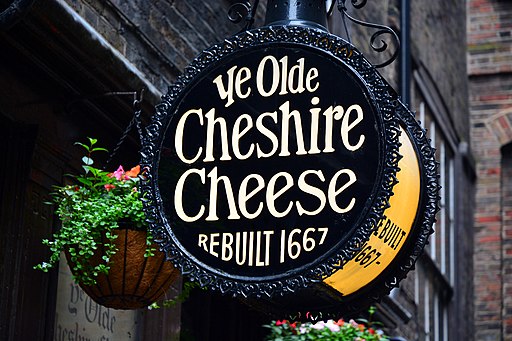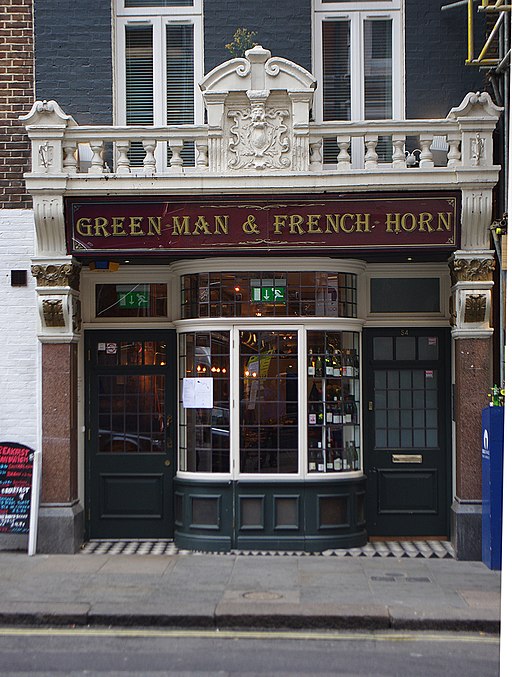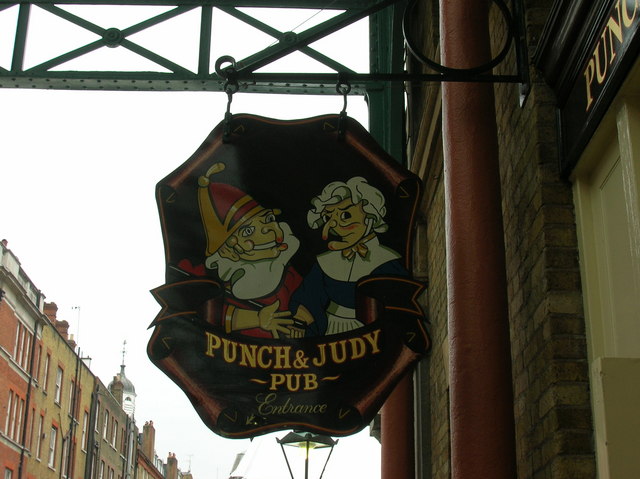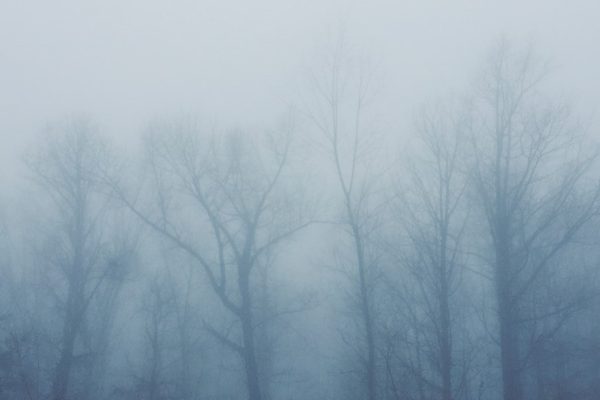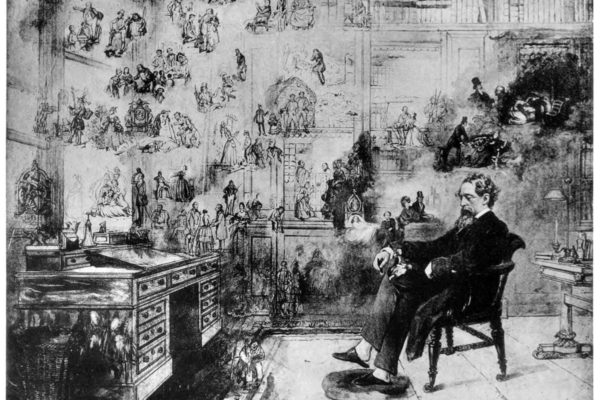I recently came across The Food of London by George Dodd (1856). It’s a dizzying compendium of statistics about the sales and consumption of food and drink in 1850s London. I can now tell you that about 100,000 people worked in the trade out of a population of about three million. I doubt if the statisticians knew about every amateur oyster seller, orange girl, pieman or woman, baked potato merchant, illegal gin or beer purveyor, any of those who thought to make a bit on the side.
In one year, 80,00 pipes (barrels really) of wine were imported at probably 350 litres a pipe and 120 chests of tea. Milk was two pence a pint. Butter came from dairies in one hundredweight tubs or earthenware crocks at half a hundredweight. A hundredweight is about 45 kilos. I could tell you more, but I won’t – it’s too exhausting! However, Cheshire cheese was the most popular cheese, hence, perhaps, the popularity of The Olde Cheshire Cheese in Fleet Street, one of Dickens’s favourite pubs.
It was pubs I was looking for and Mr George Dodd did not disappoint. There were 4,400 publicans, he tells me in London, and 1,400 beer sellers – not surprising given the state of the water. In Lower Shadwell High Street there was one pub for every six houses, including The Albion, landlord, the gentlemanly William de Burgh, and not far from The Globe and Pigeons.
There are some more odd couples, too: The Green Man and French Horn, The Goose and Gridiron, The Horse and Dolphin, The Horseshoe and Magpie, The Magpie and Pewter Platter, The Crown and Leek – Welsh, perhaps. And one of oddest is The Sash and Cocoa Tree in Finsbury Square, landlord William Monk, daughter Maran. The Valentine and Orson was in Southwark in 1803, though there was an earlier one in the eighteenth century which held the meetings of an antiquarian society. Perhaps, it was these learned gentlemen who came up with the name. The story of Valentine and Orson is French, and concerns abandoned twin boys, Valentine brought up at court and Orson in a bear’s den. You can guess the rest.
Birds of the air and beasts of the field are everywhere. Six Noah’s Arks. The Raven and Sun, plenty of Magpies with or without platters, two with Stumps, Eagles, Crows, Swans – black or white, Bulls, sometimes pied, Bears – mostly brown, one Fish, one Cat, Dogs with Ducks, and Ducks, dirty.
Mr Dodd is very helpful on the numbers: 70 King’s Arms, 90 King’s Heads, and one Henry VIII’s Head – serves him right. 70 Royal Dukes, 30 Green Mans – should that be men? 120 Lions of various colours, 70 White Harts, 60 Horses – various colours, Rainbows – 2, 65 Coaches with Horses, and fifty-five Rose and Crowns, 50 Crowns, two with Cushions, and a lot of Thistles.
The number three is everywhere: Three Compasses (fifteen of them), Three Cranes, Caps, Cups, Crowns, Doves, Goats with Heads, Kings, Mariners, Pigeons, and Spies, and Tuns, and Wheatsheafs.
But most singular are, of course, the one-offs. The Running Footman was in Berkeley Square. No Nightingale, though. That was near Regent’s Park, run by Mrs Lucretia (!) Baldock. I don’t suppose she asked, ‘What’s your poison?’ One Essex Serpent, one Lilliput Hall, and there could only be one Tippling Philosopher – no doubt deep in thought and contemplating The World Turned Upside Down on the Old Kent Road.
